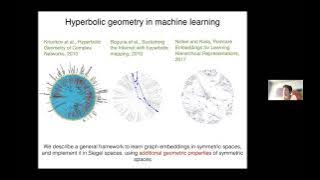Graph families | Regular graphs | Algebraic graph theory
Symmetric graph
In the mathematical field of graph theory, a graph G is symmetric (or arc-transitive) if, given any two pairs of adjacent vertices u1—v1 and u2—v2 of G, there is an automorphism such that and In other words, a graph is symmetric if its automorphism group acts transitively on ordered pairs of adjacent vertices (that is, upon edges considered as having a direction). Such a graph is sometimes also called 1-arc-transitive or flag-transitive. By definition (ignoring u1 and u2), a symmetric graph without isolated vertices must also be vertex-transitive. Since the definition above maps one edge to another, a symmetric graph must also be edge-transitive. However, an edge-transitive graph need not be symmetric, since a—b might map to c—d, but not to d—c. Star graphs are a simple example of being edge-transitive without being vertex-transitive or symmetric. As a further example, semi-symmetric graphs are edge-transitive and regular, but not vertex-transitive. Every connected symmetric graph must thus be both vertex-transitive and edge-transitive, and the converse is true for graphs of odd degree. However, for even degree, there exist connected graphs which are vertex-transitive and edge-transitive, but not symmetric. Such graphs are called half-transitive. The smallest connected half-transitive graph is Holt's graph, with degree 4 and 27 vertices. Confusingly, some authors use the term "symmetric graph" to mean a graph which is vertex-transitive and edge-transitive, rather than an arc-transitive graph. Such a definition would include half-transitive graphs, which are excluded under the definition above. A distance-transitive graph is one where instead of considering pairs of adjacent vertices (i.e. vertices a distance of 1 apart), the definition covers two pairs of vertices, each the same distance apart. Such graphs are automatically symmetric, by definition. A t-arc is defined to be a sequence of t + 1 vertices, such that any two consecutive vertices in the sequence are adjacent, and with any repeated vertices being more than 2 steps apart. A t-transitive graph is a graph such that the automorphism group acts transitively on t-arcs, but not on (t + 1)-arcs. Since 1-arcs are simply edges, every symmetric graph of degree 3 or more must be t-transitive for some t, and the value of t can be used to further classify symmetric graphs. The cube is 2-transitive, for example. (Wikipedia).



















